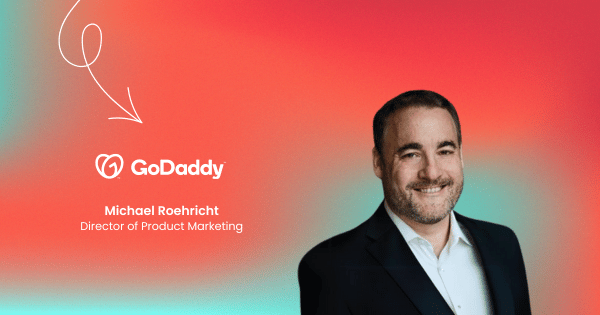This article is based on Michael Roehricht’s talk at the Product Marketing Summit in Austin. As a PMA member, you can enjoy the complete recording here. For more exclusive content, head over to your membership dashboard.
When I joined GoDaddy as the Director of Product Marketing two and a half years ago, the situation was far from ideal.
As a large company with 22 million customers, four business units, and a global presence, we had many different product managers and product marketers reporting to different business units.
The problem? We didn’t have a launch readiness framework in place, which sometimes meant we ended up launching new products without doing the proper due diligence first.
This is a common issue. When companies launch products and features willy-nilly, at best, they just waste resources. At worst, customers don’t buy the product, or they quickly churn because they don’t receive the experience they expected.
To understand how widespread this problem is, I conducted a survey on LinkedIn and in PMA’s Slack community. The results were eye-opening:
- Only one in four of us work at a company with a formal product launch readiness framework in place.
- When asked about product launch success in the past year, only one in five respondents said all their product launches were successful.
These findings suggest a correlation between having a launch readiness framework and ensuring successful product launches. Without such a framework, companies risk launching products based solely on a product manager’s enthusiasm for new features, rather than a comprehensive market-ready assessment.
The Ready, Set, Go framework: A simple but effective approach
To solve this problem, we’ve implemented a framework called “Ready, Set, Go.” This gives us a standardized way to launch products and bring them to market in our complex, cross-functional setting. We intentionally kept it simple because we know that overly complex frameworks often fail as people can’t or won’t use them.
The framework helps us provide the value and quality experiences our customers expect from our products and features. It also allows us to de-risk our product launches. As if that weren’t enough, it helps us optimize our return on investment for the marketing spend and engineering resources that go into a launch.
The framework consists of three main components or stages:
- Ready: Driven by product teams.
- Set: Driven by product marketing.
- Go: Driven by go-to-market teams.
While these core teams are responsible for driving each stage of the launch process, other teams are consulted, influenced, or informed throughout the entire journey.
This cross-functional approach supports the entire product launch process, ensuring that all relevant perspectives are considered and all necessary steps are taken to maximize the chances of a successful launch.
The Ready, Set, Go framework is highly flexible. You can use it to launch brand-new product offerings or enter new markets (level one launches), or introduce new features and experiences for existing products that might change your messaging or positioning (level two launches). Here’s a brief overview of what those launch levels involve:
|
Level one launch |
Level two launch |
BAU release (does not follow Ready, Set, Go framework) |
|
|
Impact |
Strategic big bet New product or customer on-ramp New market |
New feature for existing product Change to positioning |
Optimization of existing product |
|
Prioritization |
Skip the queue |
Priority in queue |
Standard queue |
|
Marketing |
Maximum |
Moderate |
Minimal |
Now, let’s take a closer look at each stage of the Ready, Set, Go launch framework.
Step one: Ideation
The launch process kicks off with an ideation session. At GoDaddy, we hold ideation sessions every quarter, but if you’re thinking of implementing the Ready, Set, Go framework, feel free to adjust this frequency depending on your organization’s size, complexity, and rate of innovation.
The importance of these ideation sessions lies in creating cross-functional alignment before we start building or launching products. Key teams that should be involved include customer success, finance, support, sales, and marketing.
Here’s how it typically unfolds:






